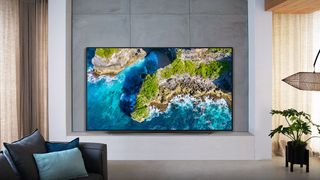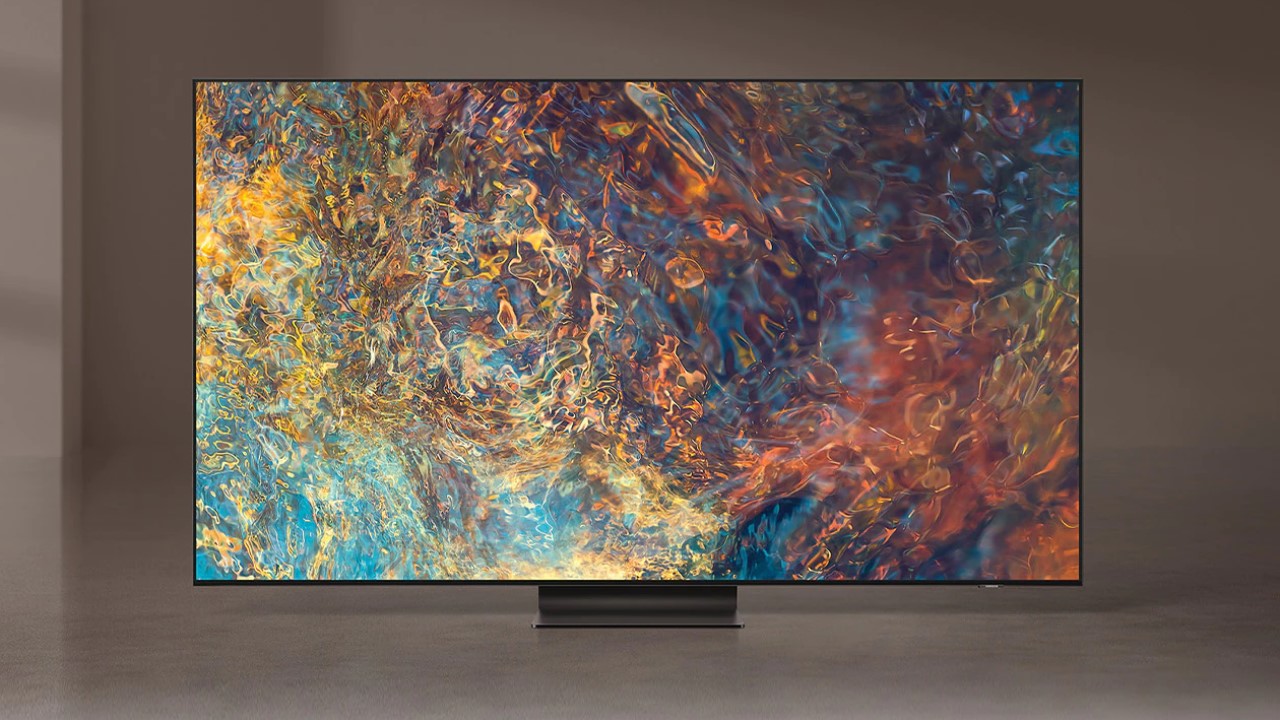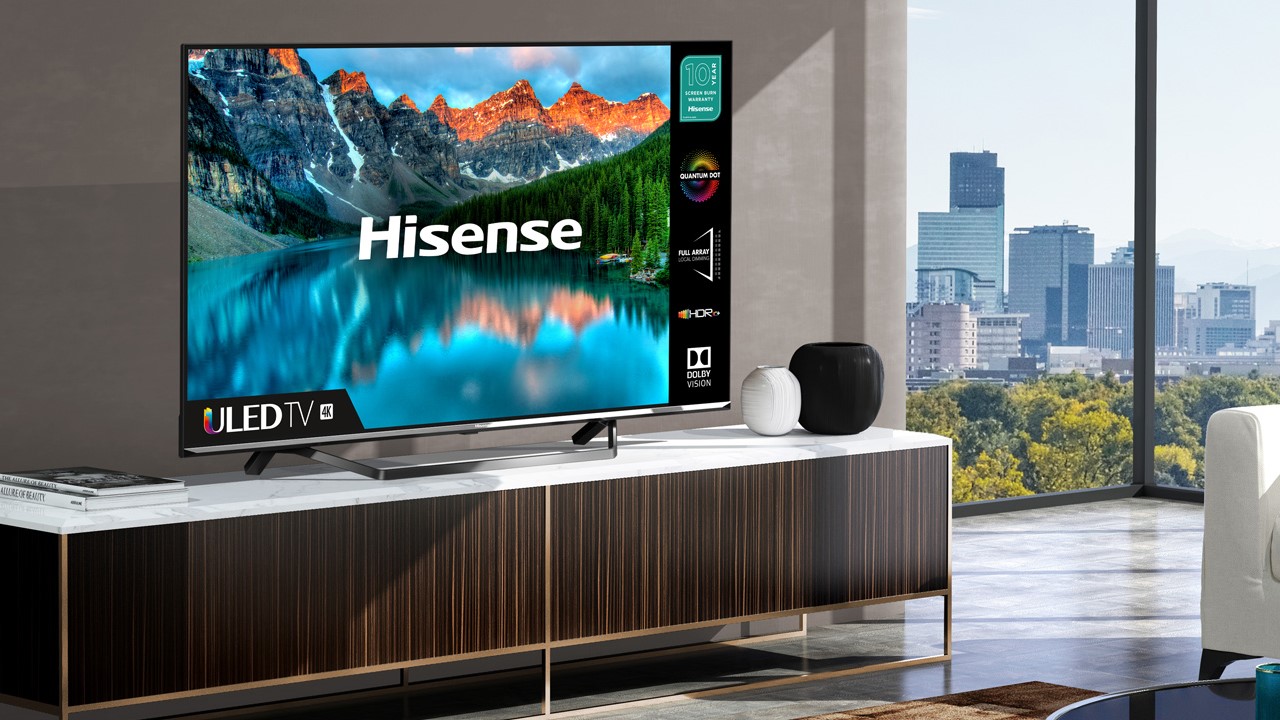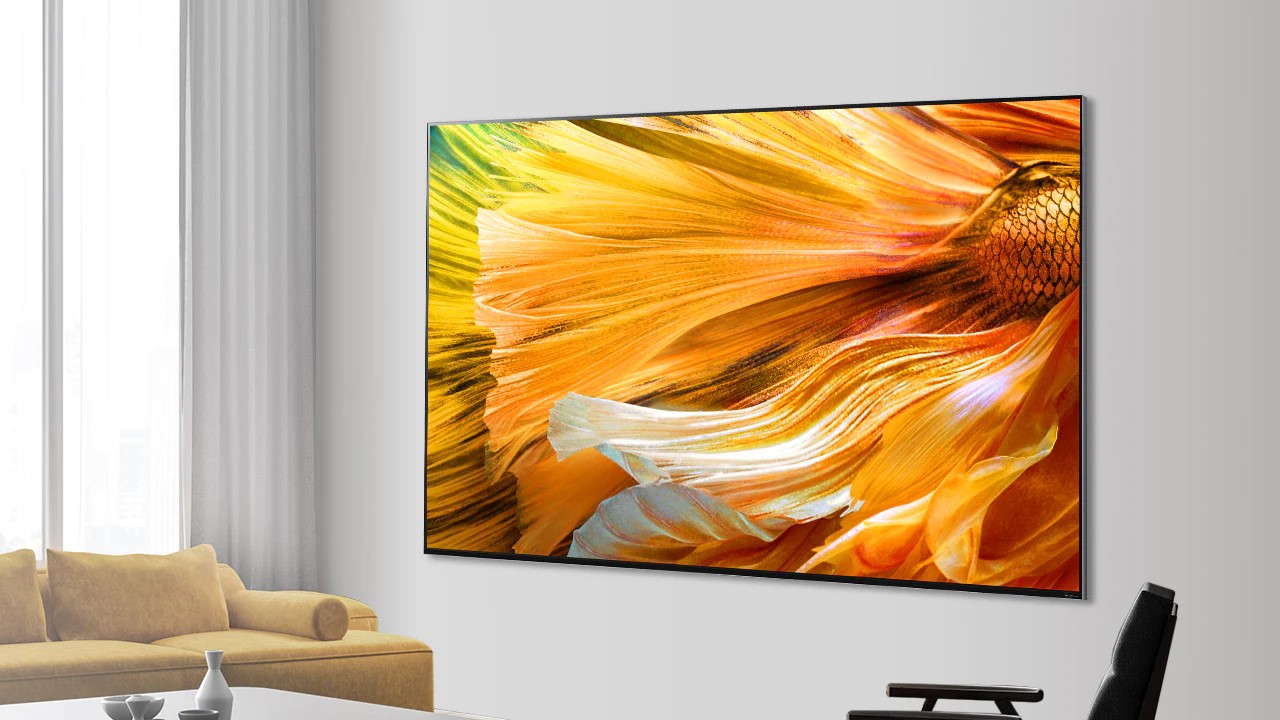QLED vs OLED vs everything else - TV technologies broken down and explained - scogginsscame1947
QLED vs OLED vs everything else - TV technologies broken down and explained

Nowadays, when it comes to researching and ogling the best play TV for your setup, which panel technology is best? OLED and QLED rule the roost, but sound so much the same - though they're worlds apart under the hood - and where do LCD, QNED, and ULED fit in?
Retail merchant quick links
If you're looking for several quick links to keep accessible and harsh arsenic you swot up along the language and then you'Re prepared to strike, then these retail merchant pages will have you well covered.
US gaming TVs: Amazon | Best Bargain | Walmart
UK play TVs: Amazon | Same | Currys | John Lewis | ebuyer | Box
This forest of acronyms might seem incomprehensible, but each one is important every bit all indicates very different attributes and characteristics from another. Despite most new TVs appearing much the same, both in appearance and specification, different empanel technologies have their own pros and cons, and on that point's no shortage of marketing blather to add extra discombobulation.
The TV securities industry is for the most part split into two camps: OLED, and LCD (which includes models sporting QLED, ULED, and QNED labels). The most ubiquitous flatscreen type is LCD (Tearful Crystal Exhibit). LCD screens all require an LED backlight to work, and this is why these sets are much dubbed LED TVs, OR even Light-emitting diode LCDs. Rival OLED is a self-immersive display. Its pixels are self-lit, so no backlight is necessary. This means the screens can be thinner and have better contrast with ink-black blacks.
So which classify should a humble gamer buy for their PS5, Xbox Series X, or play PC? You need to sort the wheat from the chaff, and that's without true considering individualistic characteristics that ready the best 4K 120Hz TVs or the advisable Television set for PS5 and Xbox Series X jump. So, let's dig a little deeper...
Organic light-emitting diode TVs - A gamer's transport
Organic light-emitting diode TVs
Pros:
- Perfect blacks and excellent demarcation
- Comfortable as a encompassing-up gambling display
Cons:
- Can suffer from image burn-in
- Expensive
The best Organic light-emitting diode TVs (Nonsynthetic LED) are the TVs powered by the hottest screen technology you can buy right now, non least because it boasts sensational image caliber with superior contrast. LG is the frontrunner in that flying field with the likes of terminal year's LG CX, existence one of the record-breaking and withal very popular, and this year's LG Organic light-emitting diode C1 and LG OLED G1 coming out of the blocks fast.
OLED is currently only available in bigger projection screen sizes and is much expensive than LCD. Sony, Panasonic, and Philips offer 48-edge models, only we have been told that 42-inch OLED panels will debut before the end of the year - though don't interpret this to mean OLED screens bequeath be getting importantly cheaper any metre soon. The 48-inch models tend to sell for the same as their 55-inch stablemates. With OLED, you'll pay a premium for a smaller riddle.

OLED is a self-emissive engineering and doesn't require a backlight (unlike LCD et al, below). Because every pixel is governable, Organic light-emitting diode screens are able to deliver pure, accurate blacks. There's no more light leakage caused by a backlight, so the contrast is much better. Information technology's this trait that has made OLED a crown choice with home cinema fans, who tend to take in movies in no or low fooling, and value the mechanics range OLEDs offer. Naturally, OLED TVs aren't just for movies; they look superb with games too. Indeed, a 4K 48-inch OLED makes for a jaw-dropping come near-branch of knowledg monitor and OLED screens also tend to emit only forward levels of blue light, which is regarded as a secure thing for eye health.
The global supplier of OLED, LG Display recently obtained 'Discomfort Glare Free' verification for its all OLED TV panels from UL, a leading world-wide safety science company, just because the screens exhibit no glare. UL's testing is based along the Co-ordinated Limelight Rating (UGR), a metric recognized by the World Commission happening Illumination (CIE). The verification mark is issued when the UGR is 22 operating theatre inferior when watching TV between 70 lx (lx) - about the brightness of a bedroom lamp - and 300 lx - about tantamount to the light from a bright window. This is in demarcation to high-conclusion Light-emitting diode LCD screens, particularly Samsung's QLED models, which make a virtue of intense brightness.
But for all this, they have an Achilles heel. OLED can be susceptible to image retention and burn-in. Manufacturers have adopted a range of technologies to combat burn-in on OLED, like pixel orbiters and related screen refreshers, and generally, these exploit well.
QLED TVs - bright and beuatiful
QLED TVs
Pros:
- Superior colour fidelity
- Immune from screen burn
- First-class image quality
Cons:
- Can seem overly bright
QLED, championed by Samsung but likewise sold by Hisense, Vizio and TCL, is an evolution on LED LCD jury technology.
The 'Q' in QLED refers to a quantum dot filter positioned between the backlight and the screen. Quantum dots emit coloured light when illuminated by a backlight, and the deepness of colours produced and their coloring material accuracy is second to none. A red apple on a lesser LCD Telly can often resemble an orange. On a QLED set, the apple's fortunate hue is far more likely to be reproduced accurately.

The top QLED TV screens, as we've seen from the likes of the Samsung QN95A, behind also follow driven nasty to produce extreme brightness with class-leading HDR peaks. Although you probably wouldn't feel homey sitting up too close to one, they can look absolutely stunning working games connected new-gen consoles (and high-gen too).
LCD TVs - The most ubiquitous of them all
LCD TVs
Pros:
- Really wide Leontyne Price range
- Immune from screen burn
Cons:
- Ofttimes have limited contrast with pinched black level performance
LCD screens represent the vast majority of TVs sold. They go into a wide miscellany of sizes at all price points, from unbelievably lofty to almost irresistibly soft. Typical characteristics are brightness and colour vibrancy. LCD TVs shine in suite with high ambient pale, and really stand call at Telly showrooms that are preternaturally bright. However, when you get them home and dim the lights, you'll notice differences. That backlight we talked earliest about starts to glow, equal a dim woolly mullein. As a result, deep blacks turn grey. More oft than not, there's a deficiency of contrast.
Manufacturers fight this with a diversity of techniques: topical anaestheti dimming arse (albeit crudely) curtail the worst excesses of an LCD backlight, and replete-array local dimming (abbreviated as FALD), rather than adjoin-lighting, offers greater preciseness. Localised dimming can markedly improve bootleg level performance on an LCD LED Television, to the point where it really isn't an issue for most users.
Scorn this, LCD screens have one unbeatable characteristic which will endear them to gamers: they don't ache from image burn-in or retention. You can play noon till nighttime, often with the same static imaging onscreen, and it won't be imprinted on your telly.

ULED TVs - A Hisense-single 'tech'
ULED TVs
Pros:
- Immune from tan-in
- Signifies a mid-range LED LCD performer
Cons:
- Not so much a dialog box technology as a merchandising label
Hisense offers ULED, which sounds like IT should live an switch TV technology to OLED or QLED, but, simply, it's not. It's a marketing moniker for its have upper-middle-range LED LCD flatscreens. There's no wizardly pixie dust here - but the value can exist excellent on these models from Hisense so they're still ones to mind.
QNED TVs - new and exclusive
QNED TVs
Pros:
- Superior colour fidelity
- Miniskirt-LED backlight technology
- Immune form screen burn
Cons:
- Pricey
Available in 4K and 8K models from LG, QNED TVs are LCD TVs that use a Mini-LED backlight with a Quantum Dot vividness filter, able to bring forth 100 per penny colorize volume and colour consistency.
The adoption of Mini LED on these models has allowed LG to offer both increased brightness and more dimming zones, for more precise HDR direction and high demarcation. Suchlike loose Light-emitting diode LCDs, there's nothing to worry about when it comes to image retention. But in that respect is something to worry about in price - IT'll be high - and availability - that's blue. So new are these TVs that we power have to wait a bit in front prices fully roll and go pronto available at retailers; if you're lucky, though, our terms finding tech will show the latest prices for you to a lower place.

Which to go for?
So while the versatile name calling used for Telecasting panel technical school may reasonable similar, at that place are big differences between them when IT comes to what's going on inside, and what picture you'll get.
If you're on an familiar budget, debates about Boob tube venire tech largely become irrelevant. You'll be buying an Light-emitting diode LCD screen (Oregon a derivative). If this is you, try and opt for a television with low input lag (lower than 20ms is a effective performance), and joy in the fact that your new screen is immune to the tribulations of picture fire.
However, most folks going for a make unprecedented gambling Television set will represent deciding between the two juggernauts: OLED and QLED. These are undoubtedly the best televisions for PS5 and XSX, workforce down. In brief, if you want a premium LED LCD performer with high brightness and class-leading color fidelity, opt for QLED (or QNED); whereas if you're after the deepest blacks, a cinema-effect screen, and a cover that can atomic number 4 comfortably used up close, almost similar one of the best gaming monitors, past go for an OLED. As long Eastern Samoa you're wary of the possibility of burn-in, information technology shouldn't constitute a major concern. But they hind end be pricey. Both wish give you around of the unconditional best picture qualities passing, and both leading manufacturers - Samsung and LG - keep pushing the gasbag with to each one cycle.
As mentioned at the top of this explainer, your retail merchant options are numerous and varied for TVs, with regular discounts also occurring across the internet, so here are those quick links again to get you going:
US gaming TVs: Amazon | Best Buy | Walmart
United Kingdom gaming TVs: Amazon | Very | Currys | John Lewis | ebuyer | Box
Source: https://www.gamesradar.com/qled-vs-oled-vs-lcd/
Posted by: scogginsscame1947.blogspot.com



0 Response to "QLED vs OLED vs everything else - TV technologies broken down and explained - scogginsscame1947"
Post a Comment